
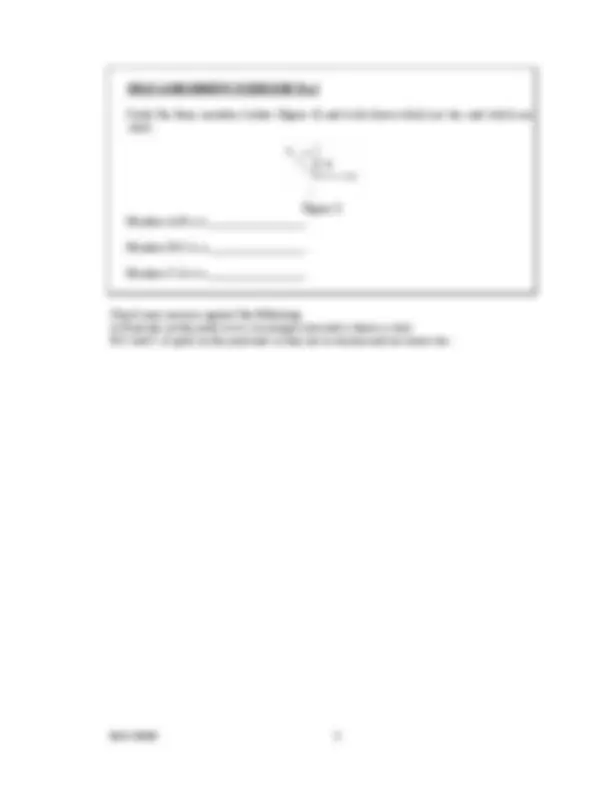
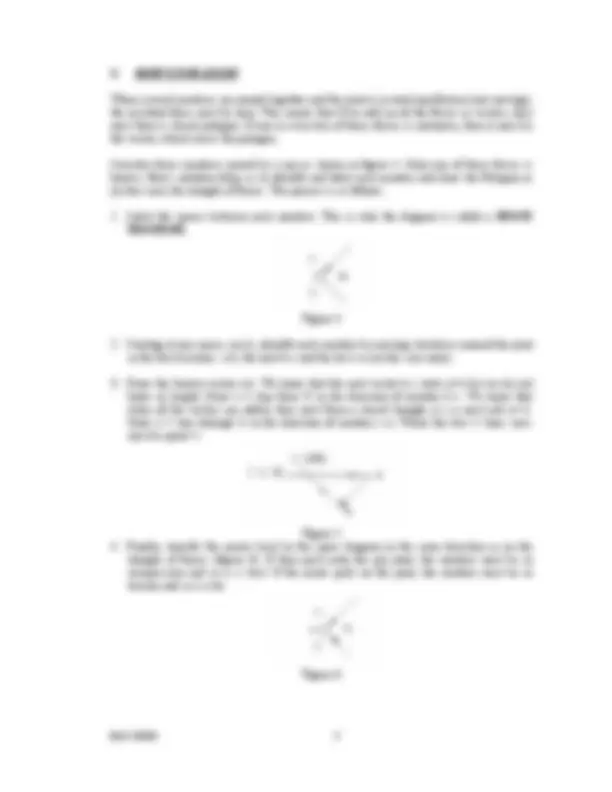
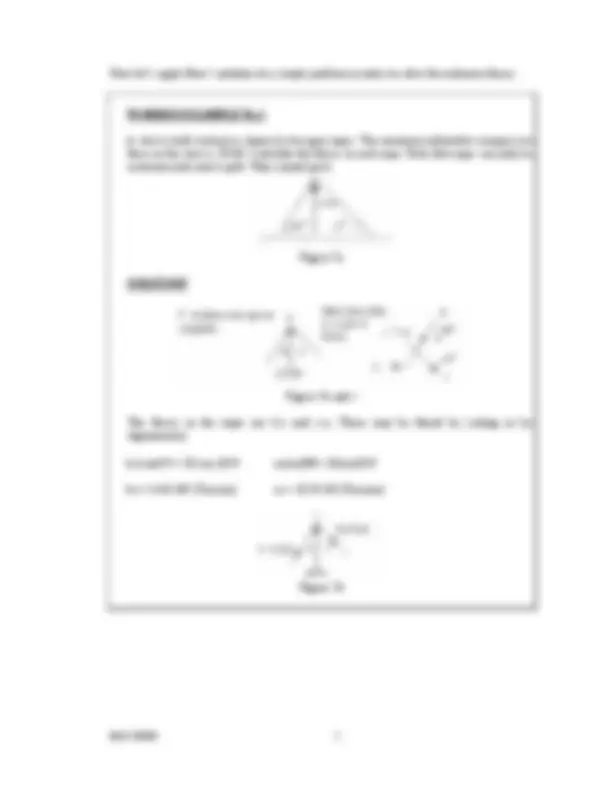
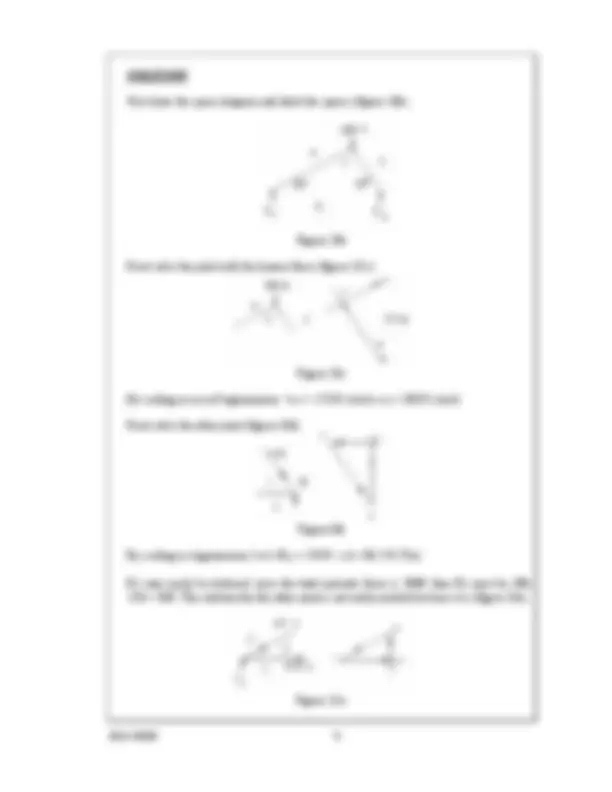
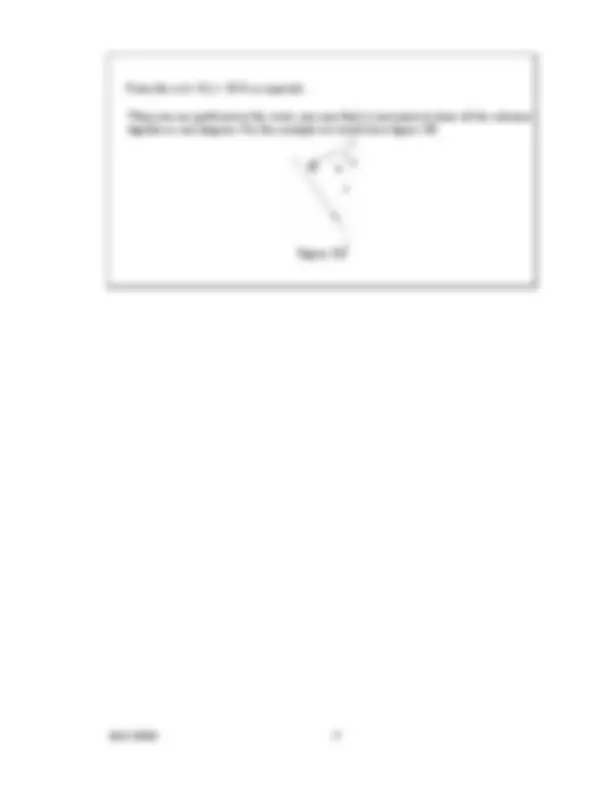
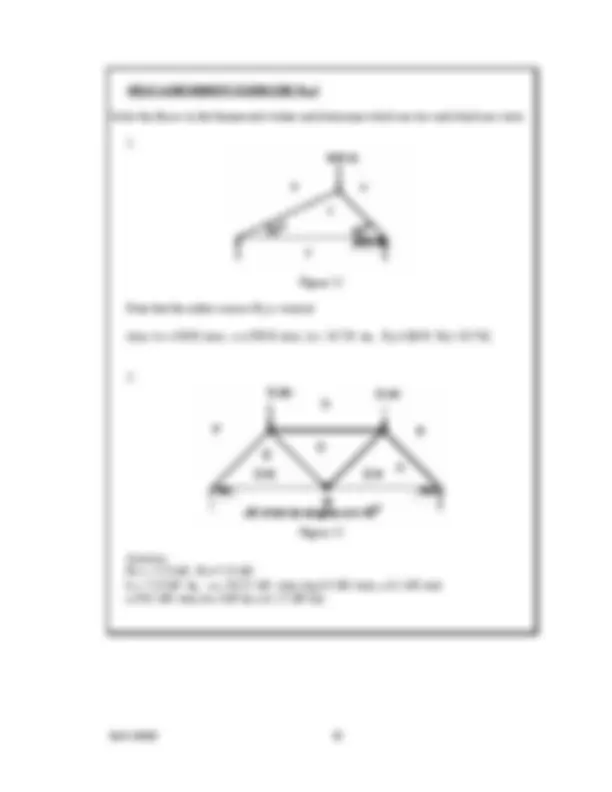


Study with the several resources on Docsity

Earn points by helping other students or get them with a premium plan


Prepare for your exams
Study with the several resources on Docsity

Earn points to download
Earn points by helping other students or get them with a premium plan
Community
Ask the community for help and clear up your study doubts
Discover the best universities in your country according to Docsity users
Free resources
Download our free guides on studying techniques, anxiety management strategies, and thesis advice from Docsity tutors
Fames of the
Typology: Exams
1 / 11

This page cannot be seen from the preview
Don't miss anything!







A pin joint allows the joined members to swivel as opposed to a rigid joint that does not. A rigid joint may be welded but a pin joint may be a bolt, a rivet or any form of swivel pin.
Figure 1
The important points about a pin joint are:
Consider a member (bar) with a pin joint at each end as shown below. A pin joint cannot transmit rotation (torque) from one to another so each can only push or pull on the joint along the direction of its length. Remember also that the force in the other end of each member also pushes or pulls and so acts in the opposite direction with equal force. A member in tension is called a TIE and is shown with arrows pointing inwards at each end. A member in compression is called a strut and is shown with arrows pointing outwards at each end.
Figure 2
When several members are pinned together and the joint is in total equilibrium (not moving), the resultant force must be zero. This means that if we add up all the forces as vectors, they must form a closed polygon. If one or even two of these forces is unknown, then it must be the vector, which closes the polygon.
Consider three members joined by a pin as shown in figure 4. Only one of these forces is known. Bow's notation helps us to identify and label each member and draw the Polygon or (in this case) the triangle of forces. The process is as follows.
Figure 4
Figure 5
Figure 6
Now let’s apply Bow’s notation to a simple problem in order to solve the unknown forces.
WORKED EXAMPLE No.
A strut is held vertical as shown by two guy ropes. The maximum allowable compressive force in the strut is 20 kN. Calculate the forces in each rope. Note that ropes can only be in tension and exert a pull. They cannot push.
Figure 7a
SOLUTION
Figure 7b and c
The forces in the ropes are b-c and c-a. These may be found by scaling or by trigonometry.
bc/sin45o = 20 /sin 105o^ ca/sin30o= 20/sin105o
bc= 14.64 kN (Tension) ca = 10.35 kN (Tension)
Figure 7d
Let’s now apply our knowledge to unknown forces in latticework frames. Here are some examples of lattice work frames.
Roof trusses. Electric Pylons. Cranes. Bridges
Many of these structures are riveted and not entirely free to rotate at the joint but the theory of pin jointed frames seems to work quite well for them. We will apply Bow's notation to each joint in turn and so solve the forces in each member. By transferring the direction back from the polygon to the framework diagram, it can be deduced which are struts and which are ties. Knowing this, the force direction is determined at the other end of the member and this is needed to solve the other pin joints.
You learned earlier that a strut is a member in compression and a tie is a member in tension. They are drawn with the internal forces shown as follows.
Figure 9
The following worked example show’s you how solve a basic problem.
WORKED EXAMPLE No.
Solve the forces and the reactions for the frame shown on figure 10a
Figure 10a
First draw the space diagram and label the spaces (figure 10b).
Figure 10b
Next solve the joint with the known force (figure 10 c).
Figure 10c
By scaling or use of trigonometry b-c = 173 N (strut) c-a = 100 N (strut)
Next solve the other joint (figure 10d).
Figure10d
By scaling or trigonometry b-d =R1 = 150 N. c-d = 86.5 N (Tie)
R2 may easily be deduced since the total upwards force is 200N then R2 must be 200- 150 = 50N. The solution for the other joint is not really needed but here it is (figure 10e).
Figure 10 e
SELF ASSESSMENT EXERCISE No.
Solve the forces in the frameworks below and determine which are ties and which are struts.
Figure 11
Note that the rollers ensure R2 is vertical.
(Ans. b-c 450 N strut, c-a 370 N strut, d-c 317 N tie, R1=183 N R2= 317 N)
Figure 12
Answers R1 = 5.75 kN, R2=7.25 kN. b-c 7.25 kN tie, a-c 10.25 kN strut, d-g 6.5 kN strut, c-d 1 kN strut. e-f 8.2 kN strut, d-e 1kN tie, e-b 5.7 kN tie)
Figure 13
Answers R 1 = 25 kN R 2 = 20 kN b-a = 35.5 kN (strut) e-b = 25 kN (tie) h-g = 20 kN (tie) h-a = 29 kN (strut) f-c = 25 kN (tie) c-d = 7.07 kN (strut) d-a = 20 kN (strut) h-d = 20 kN (tie) c-b = 30 kN 9tie)
Tip for solution. Start by finding the reactions and then solving one of the bottom corners where only 3 forces act.
There are other more mathematical ways to solve the forces in frames and this is covered in the more advanced tutorials on statics.